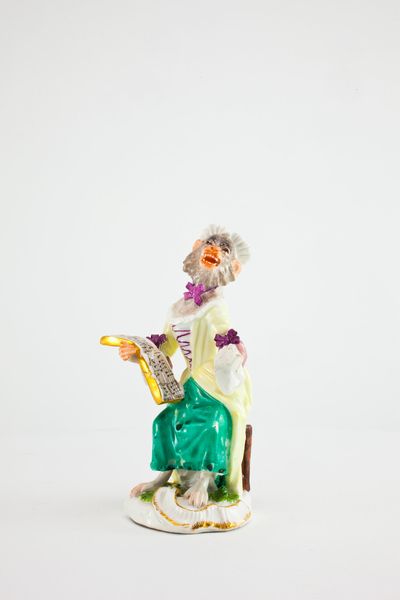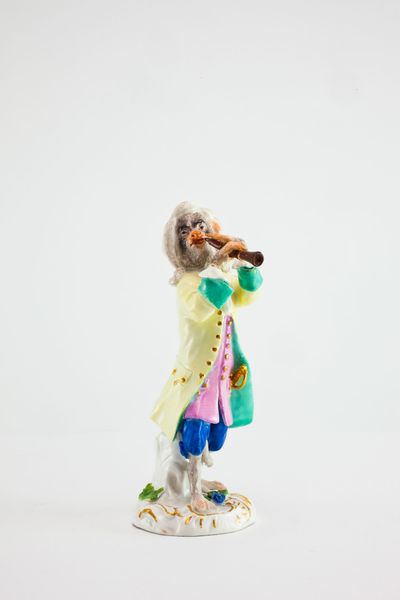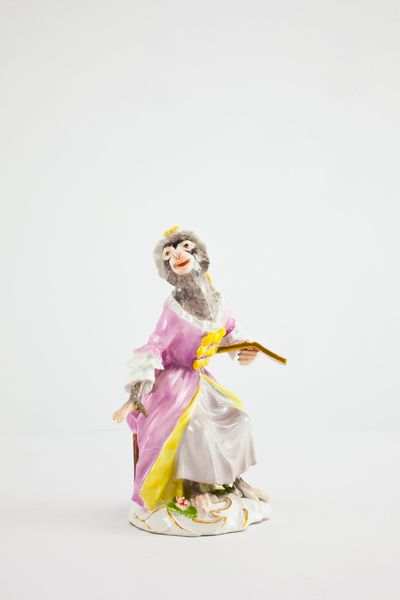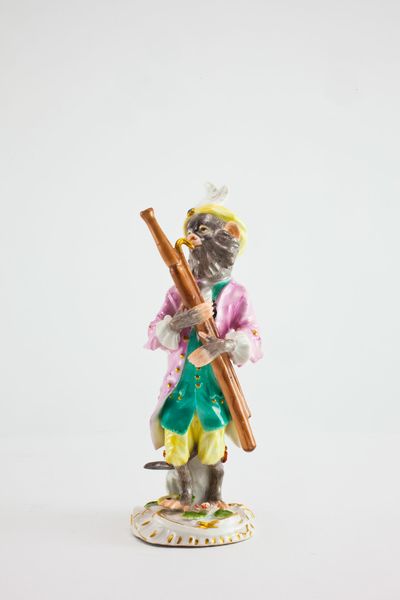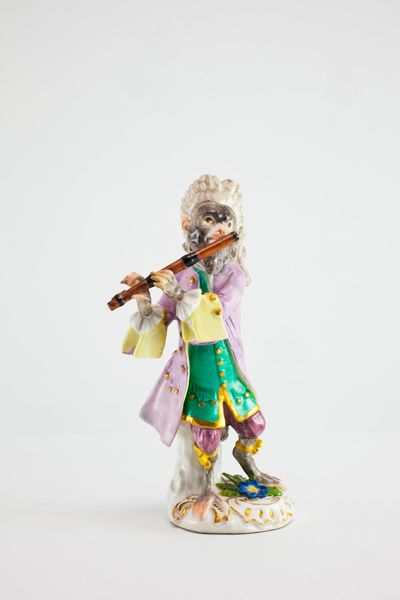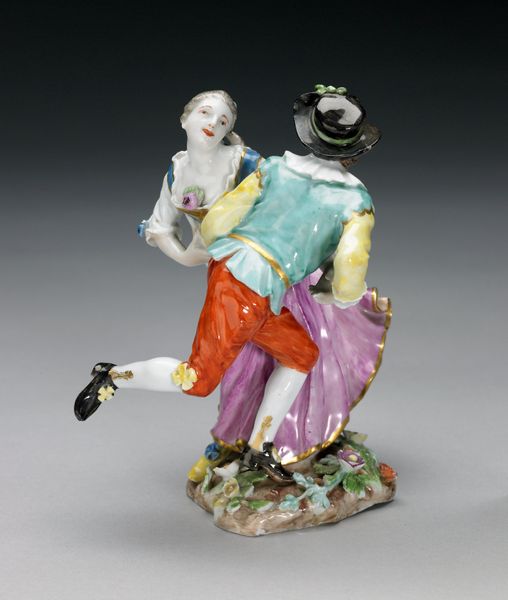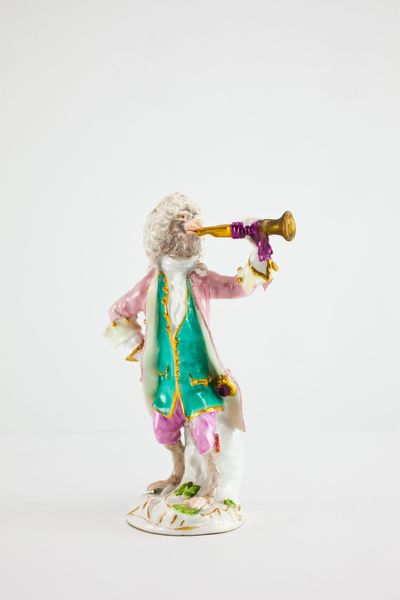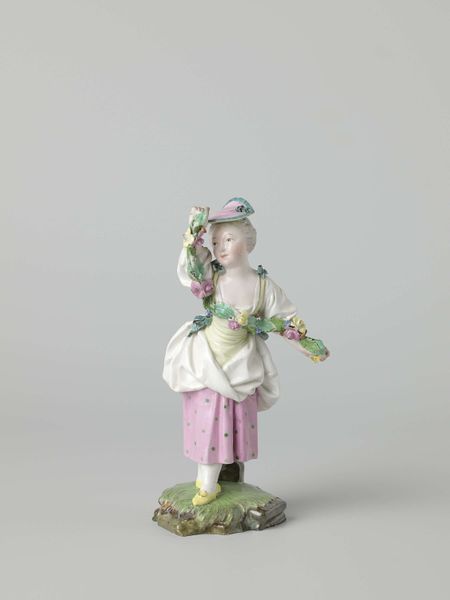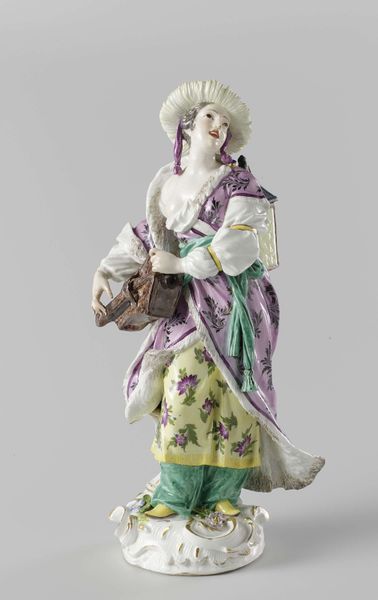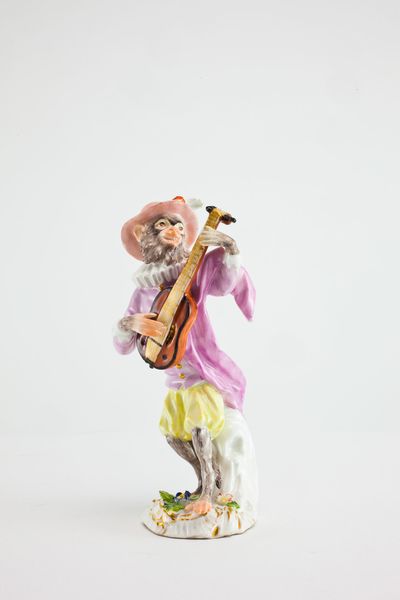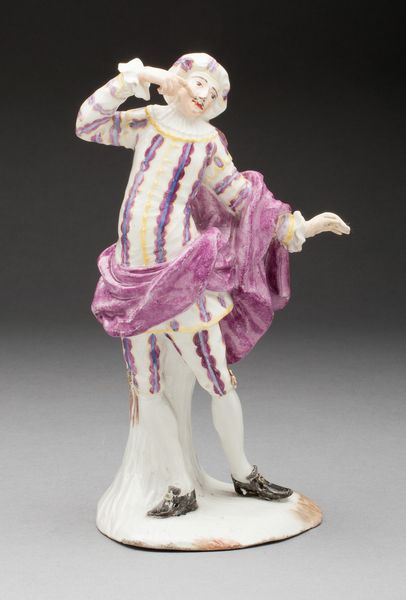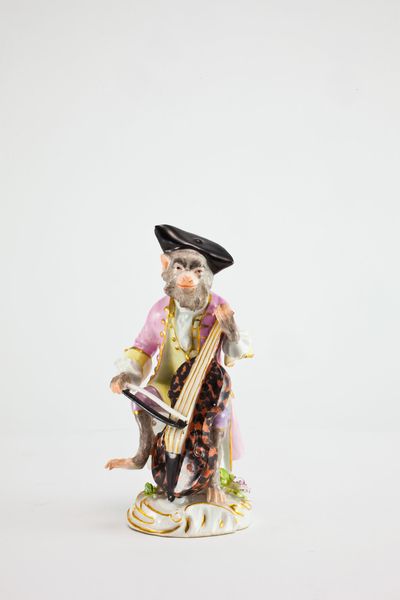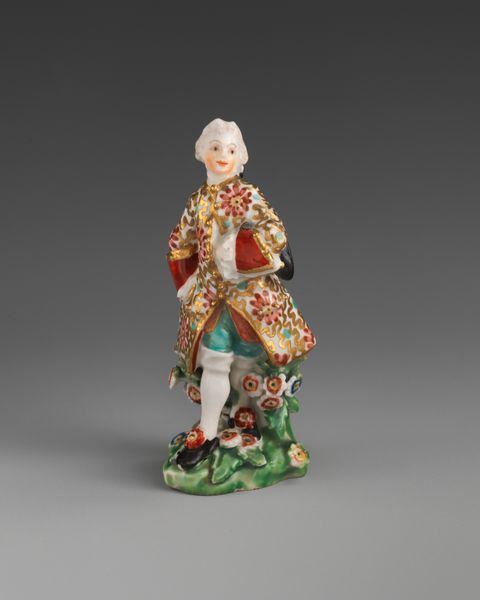
Hurdy-Gurdy Player for the Monkey Band c. 1765
0:00
0:00
ceramic, porcelain, sculpture
#
ceramic
#
porcelain
#
figuration
#
sculpture
#
genre-painting
#
decorative-art
#
rococo
Dimensions: H. 5 7/16 in. (13.8 cm)
Copyright: Public Domain
Editor: Here we have the "Hurdy-Gurdy Player for the Monkey Band" made around 1765 by the Meissen Porcelain Manufactory. It’s a delicate porcelain sculpture of a monkey dressed in finery playing an instrument. The whole thing feels like a satire. How do you interpret this work? Curator: It's crucial to remember that the Enlightenment was a period of immense social stratification. While philosophers preached equality, societal structures remained rigidly hierarchical. Works like this, part of what was called a "singerie," reflect that tension. These "monkey bands," were fashionable and were much more than just amusing figurines. They offered a satirical commentary on the aristocracy. Editor: So the monkey is essentially mocking the upper class? Curator: Precisely! The Rococo style, with its elegance and ornamentation, was favored by the elite. This piece exaggerates those very qualities, highlighting what critics saw as decadence. By dressing a monkey in human clothes and having him play music, they exposed and ridiculed the absurdities and vanities of the ruling class. Consider, too, the power dynamics at play when you have a manufacturer creating works seemingly designed for the very group it's satirizing. Does it soften the critique? Editor: It certainly adds a layer of complexity. It’s interesting to see art being used as social commentary, even back then. I had not thought about who the consumer was. Curator: Exactly! The very material, porcelain, was also a luxury item, making the satire all the more pointed. What does that suggest to you? Editor: I guess that porcelain makes it almost like the elite were in on the joke... or at least, aware of it? Curator: Perhaps! Considering the identity of the work’s consumer changes everything. It suggests a more nuanced view of 18th-century social and political consciousness. Editor: Thanks so much! That gives me a totally different perspective. Curator: It's a constant negotiation of power, privilege, and representation – themes still relevant today. Keep questioning those narratives, and you’ll continue to find new meanings in art.
Comments
No comments
Be the first to comment and join the conversation on the ultimate creative platform.
